Abstract
The epidemiology of malaria is discussed with special reference to the pattern observed in equatorial Africa, where the disease is very stable and where certain features, such as severe epidemic tendencies and ready amenability to control, commonly found in other malarious regions, are lacking. The particular conditions giving rise to stability are described in detail, and the ways in which they can be modified to bring about control of the disease in its stable form are outlined. The importance of measuring certain rates—for example, the basic reproduction rate, the index of stability, and the actual reproduction rate—when making any major malaria survey is emphasized, and formulae by means of which such rates can be readily calculated are included in an annex.
Full text
PDF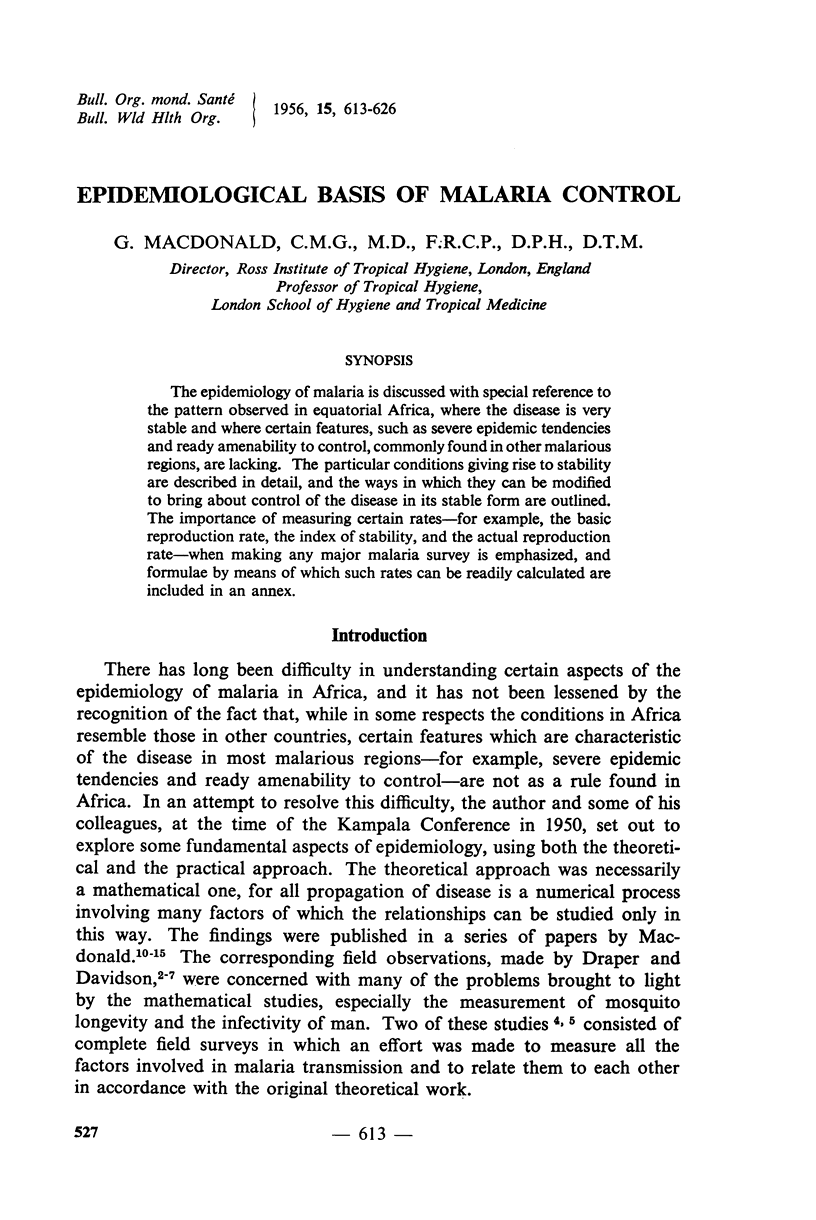
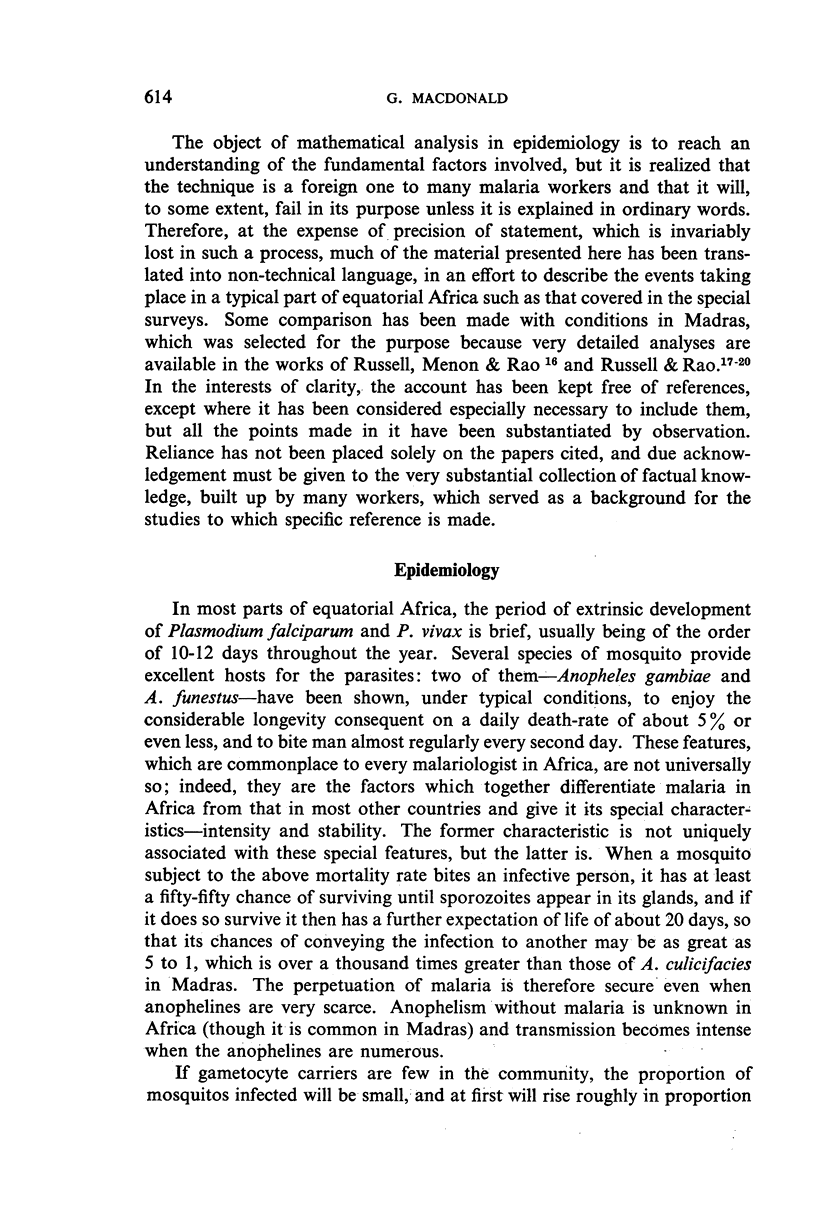
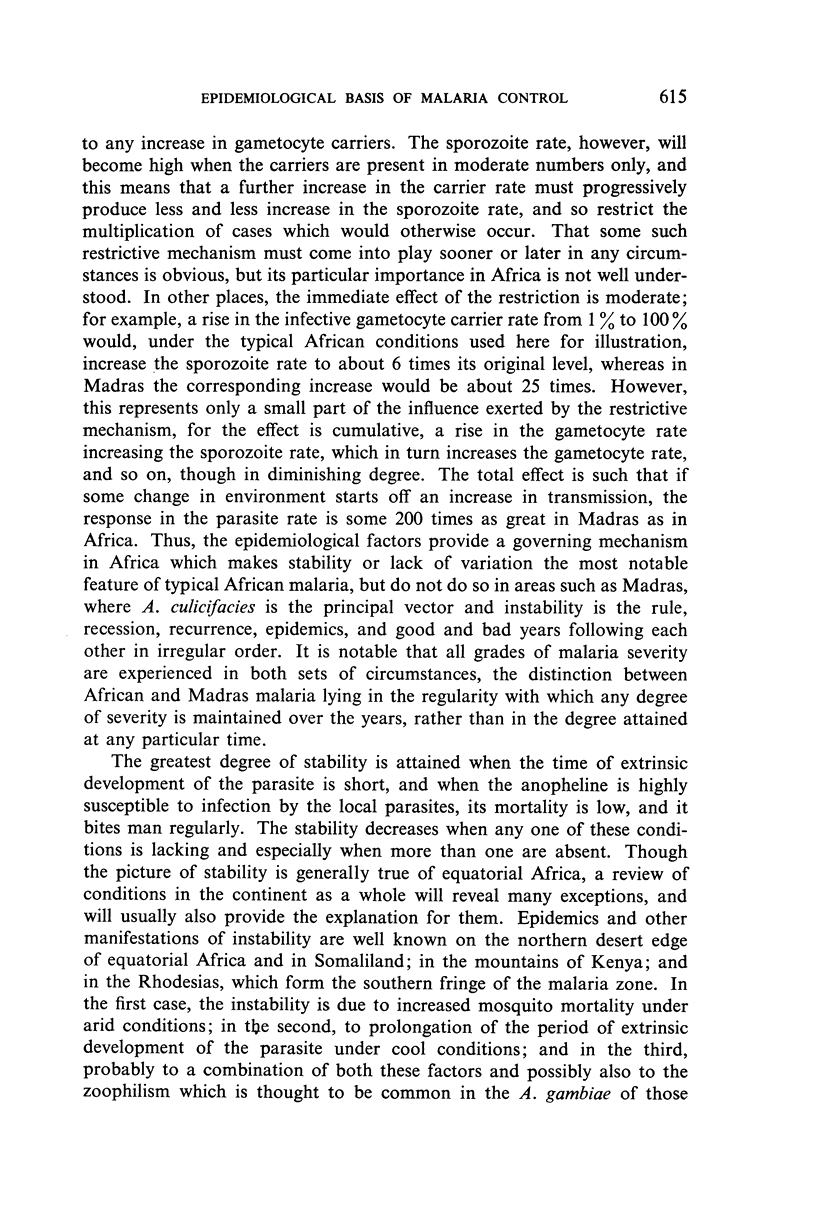


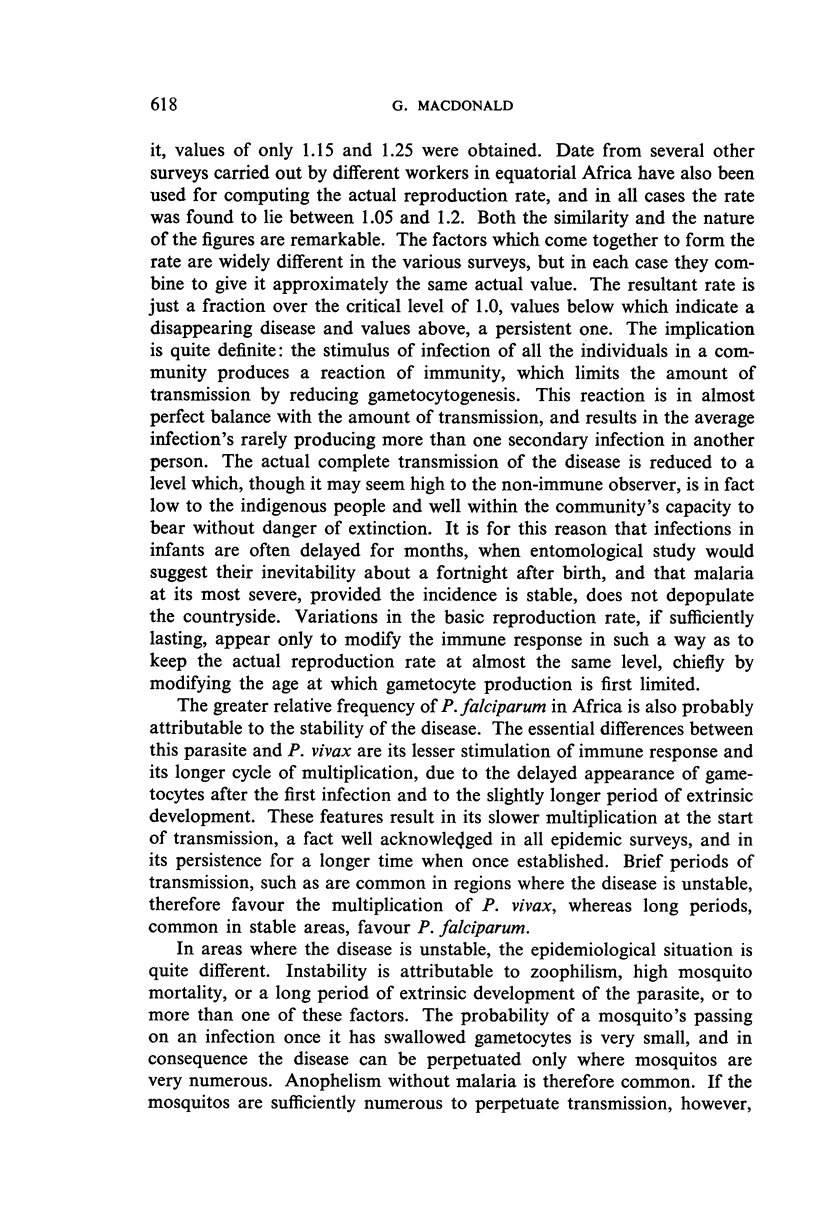
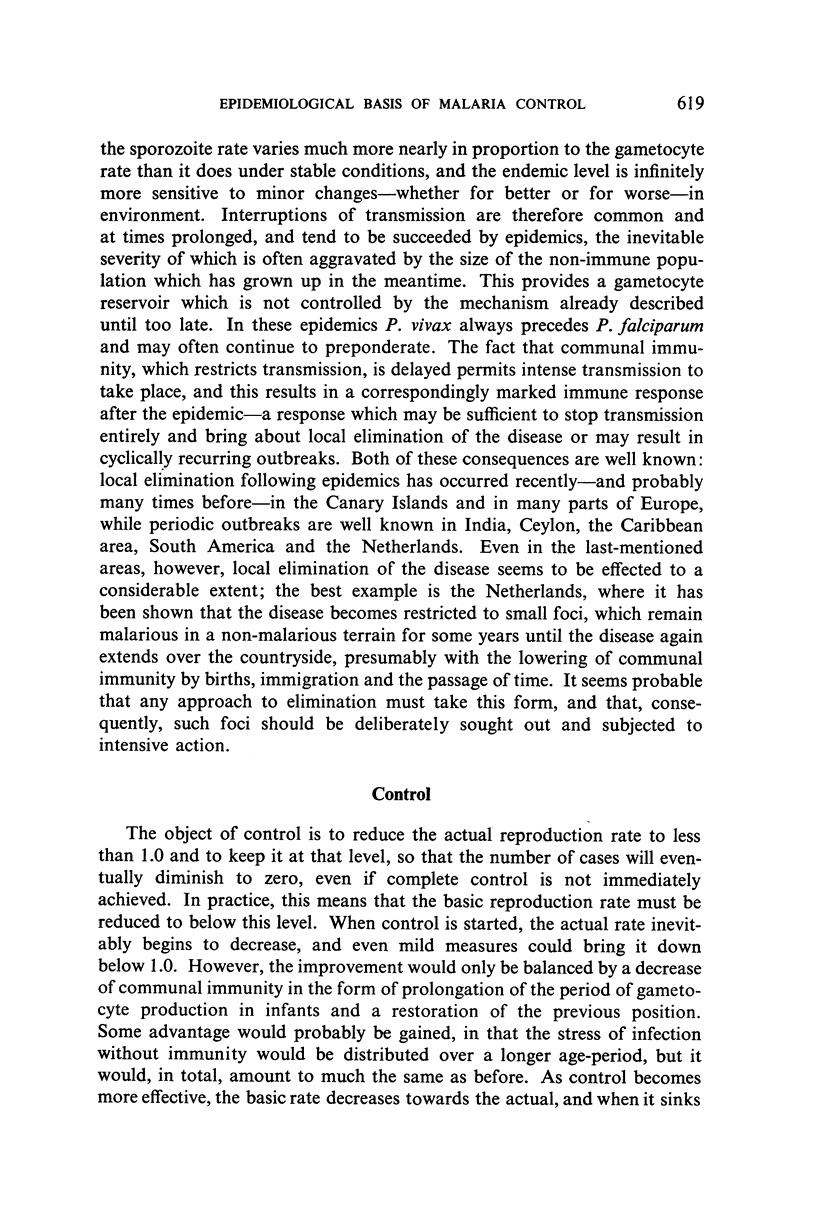
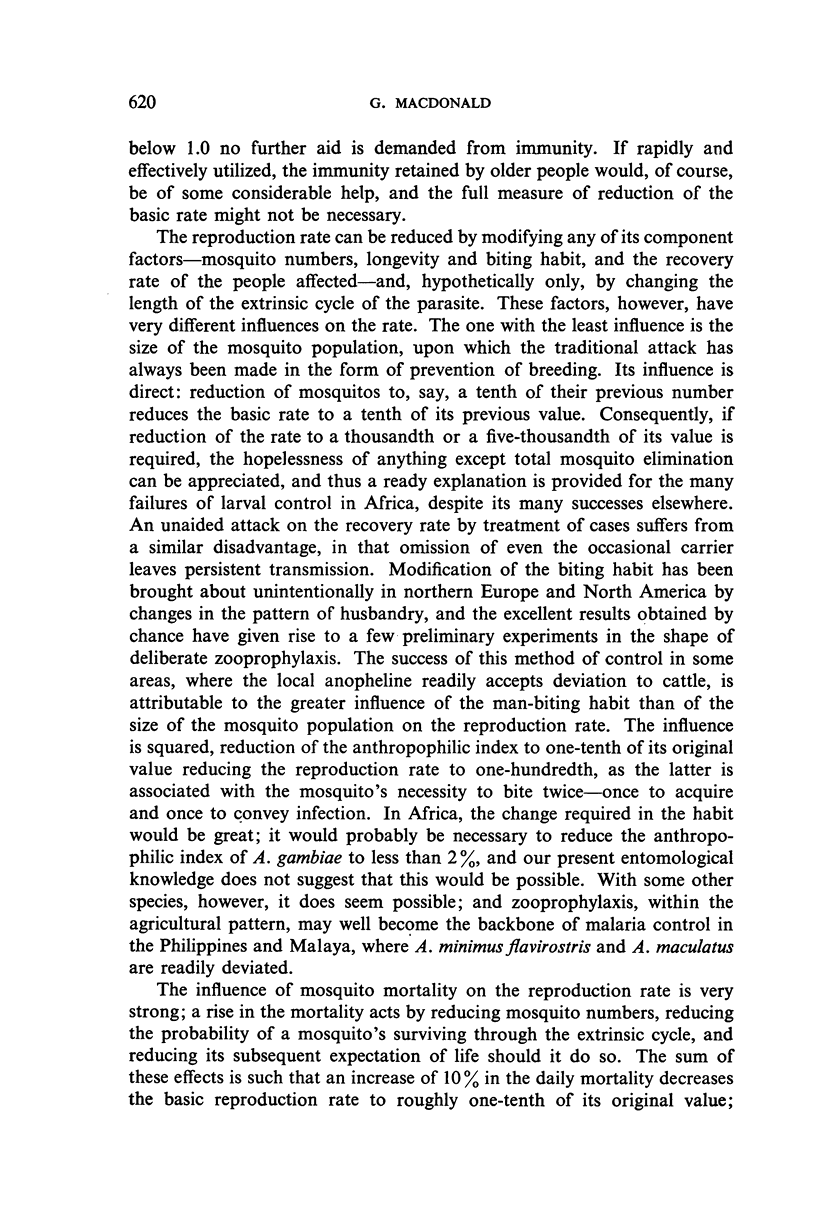

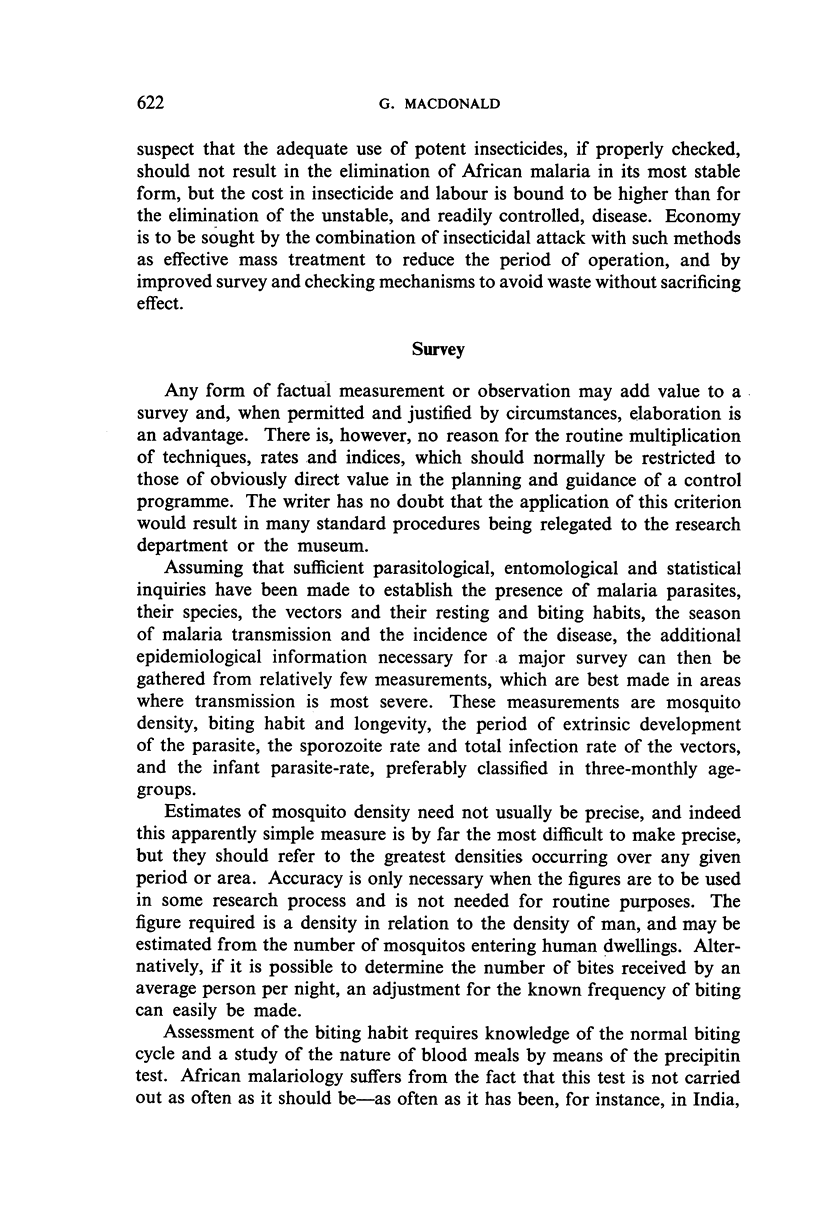

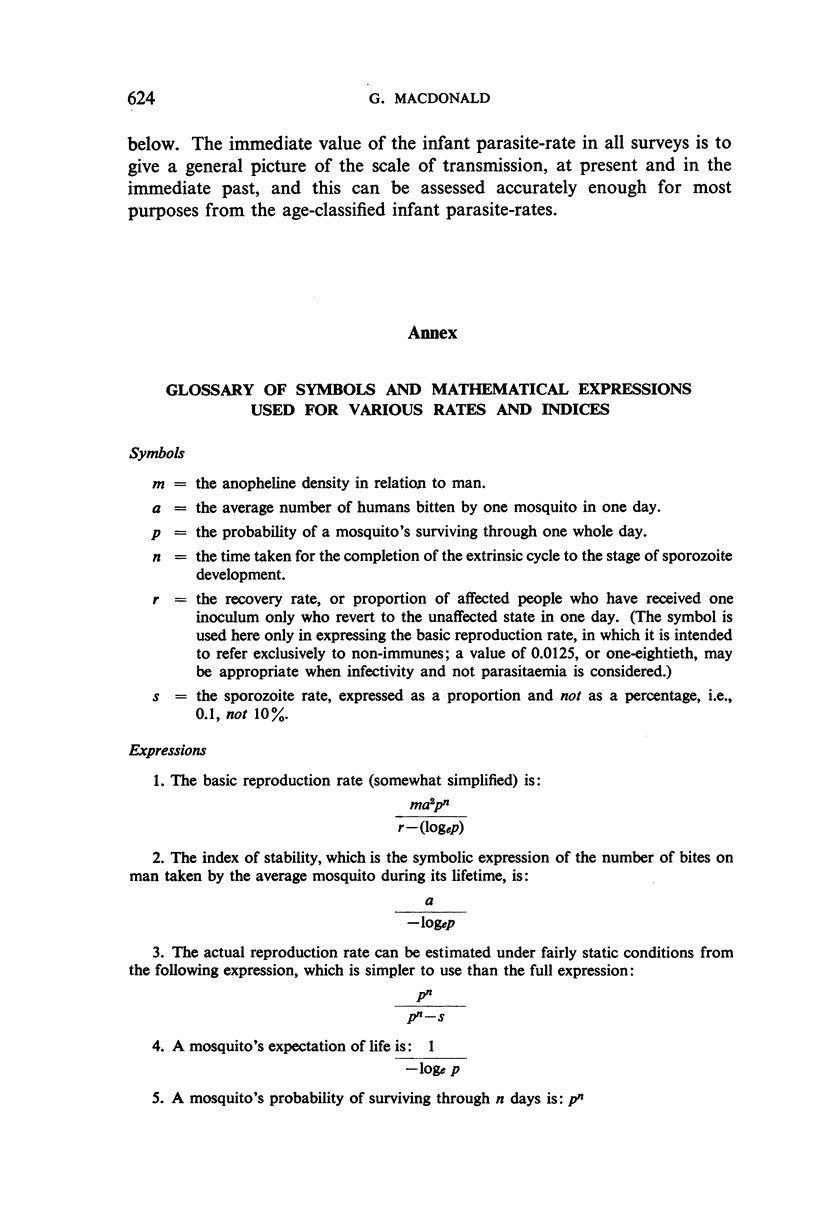
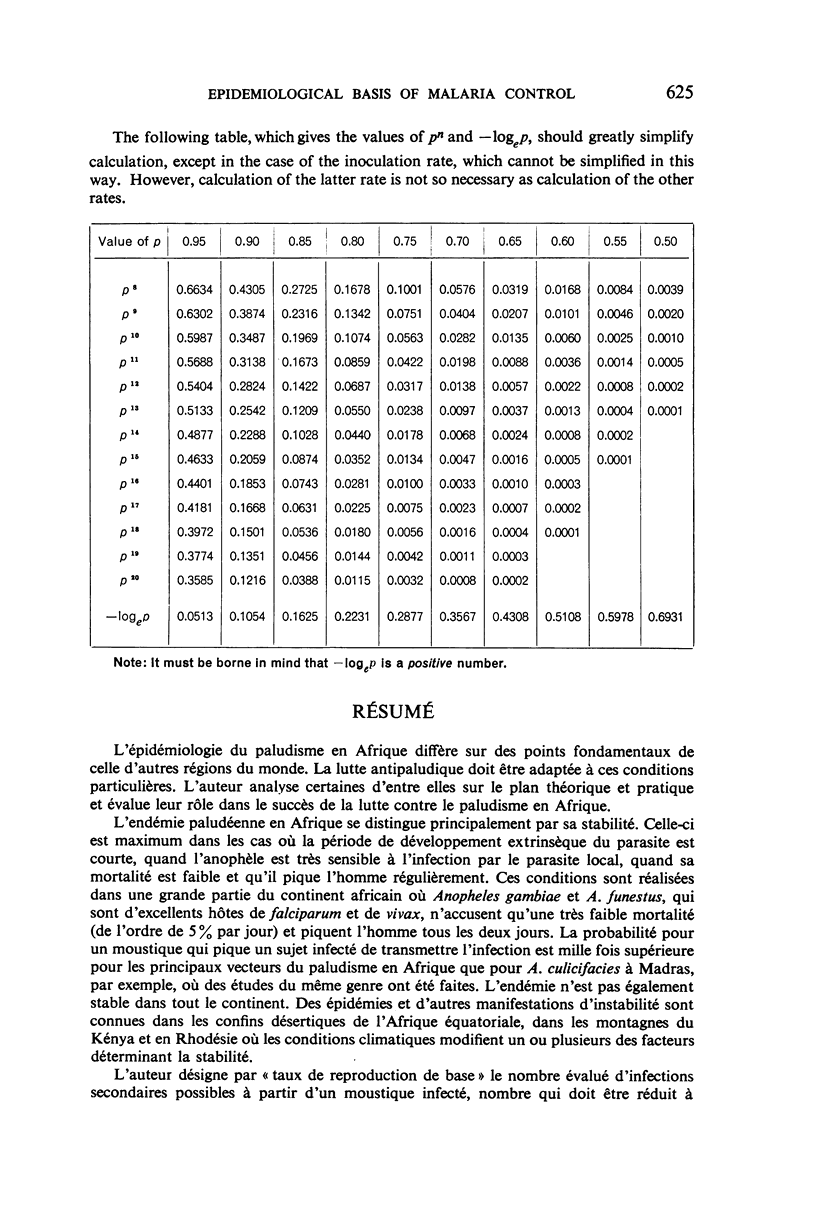
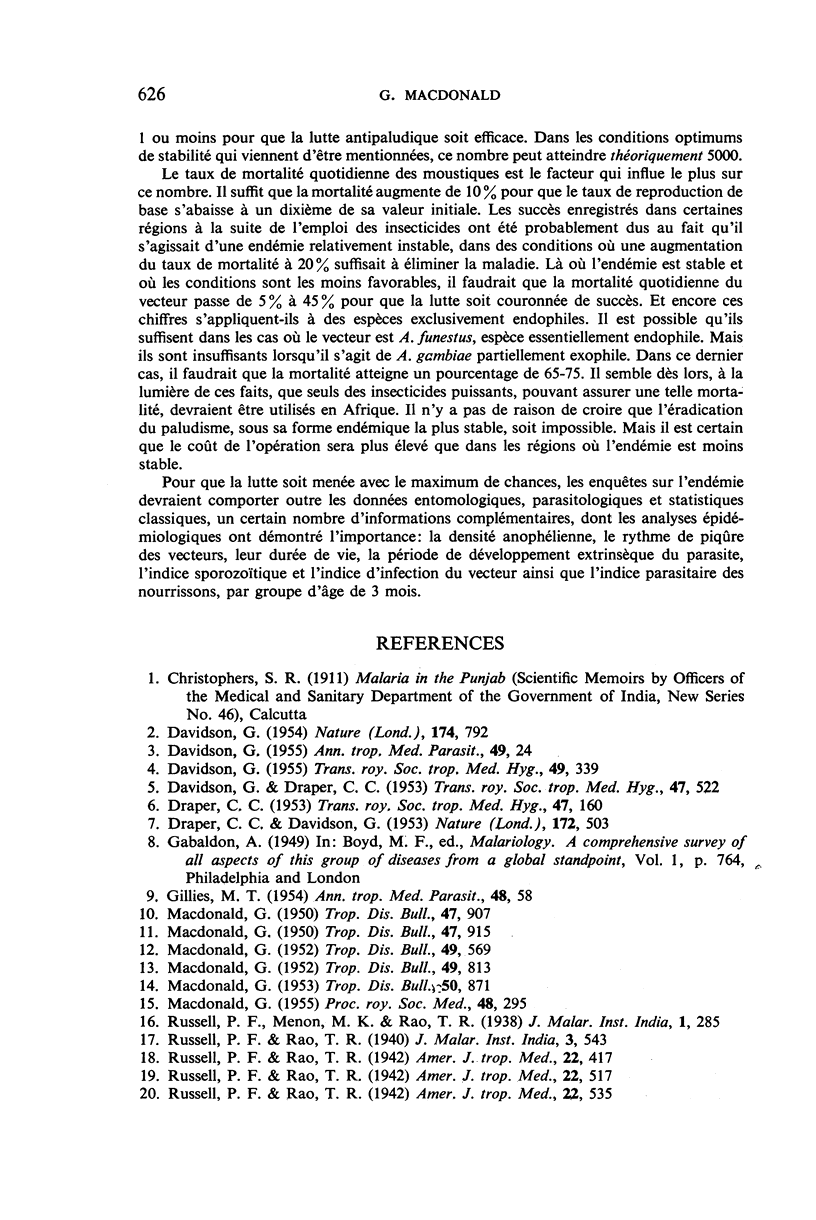
Selected References
These references are in PubMed. This may not be the complete list of references from this article.
- DAVIDSON G., DRAPER C. C. Field studies of some of the basic factors concerned in the transmission of malaria. Trans R Soc Trop Med Hyg. 1953 Nov;47(6):522–535. doi: 10.1016/s0035-9203(53)80005-2. [DOI] [PubMed] [Google Scholar]
- DAVIDSON G. Estimation of the survivalrate of anopheline mosquitoes in nature. Nature. 1954 Oct 23;174(4434):792–793. doi: 10.1038/174792a0. [DOI] [PubMed] [Google Scholar]
- DAVIDSON G. Measurement of the ampulla of the oviduct as a means of determining the natural daily mortality of Anopheles gambiae. Ann Trop Med Parasitol. 1955 Mar;49(1):24–36. doi: 10.1080/00034983.1955.11685648. [DOI] [PubMed] [Google Scholar]
- DRAPER C. C., DAVIDSON G. A new method of estimating the survival-rate of anopheline mosquitoes in nature. Nature. 1953 Sep 12;172(4376):503–503. doi: 10.1038/172503a0. [DOI] [PubMed] [Google Scholar]
- DRAPER C. C. Observations on the infectiousness of gametocytes in hyperendemic malaria. Trans R Soc Trop Med Hyg. 1953 Mar;47(2):160–165. doi: 10.1016/0035-9203(53)90072-8. [DOI] [PubMed] [Google Scholar]
- GILLIES M. T. The recognition of age-groups within populations of Anopheles gambiae by the pre-gravid rate and the sporozoite rate. Ann Trop Med Parasitol. 1954 Mar;48(1):58–74. doi: 10.1080/00034983.1954.11685599. [DOI] [PubMed] [Google Scholar]
- MACDONALD G. The analysis of equilibrium in malaria. Trop Dis Bull. 1952 Sep;49(9):813–829. [PubMed] [Google Scholar]
- MACDONALD G. The analysis of infection rates in diseases in which superinfection occurs. Trop Dis Bull. 1950 Oct;47(10):907–915. [PubMed] [Google Scholar]
- MACDONALD G. The analysis of malaria epidemics. Trop Dis Bull. 1953 Oct;50(10):871–889. [PubMed] [Google Scholar]
- MACDONALD G. The analysis of malaria parasite rates in infants. Trop Dis Bull. 1950 Oct;47(10):915–938. [PubMed] [Google Scholar]
- MACDONALD G. The analysis of the sporozoite rate. Trop Dis Bull. 1952 Jun;49(6):569–586. [PubMed] [Google Scholar]
- MACDONALD G. The measurement of malaria transmission. Proc R Soc Med. 1955 Apr;48(4):295–302. [PMC free article] [PubMed] [Google Scholar]


